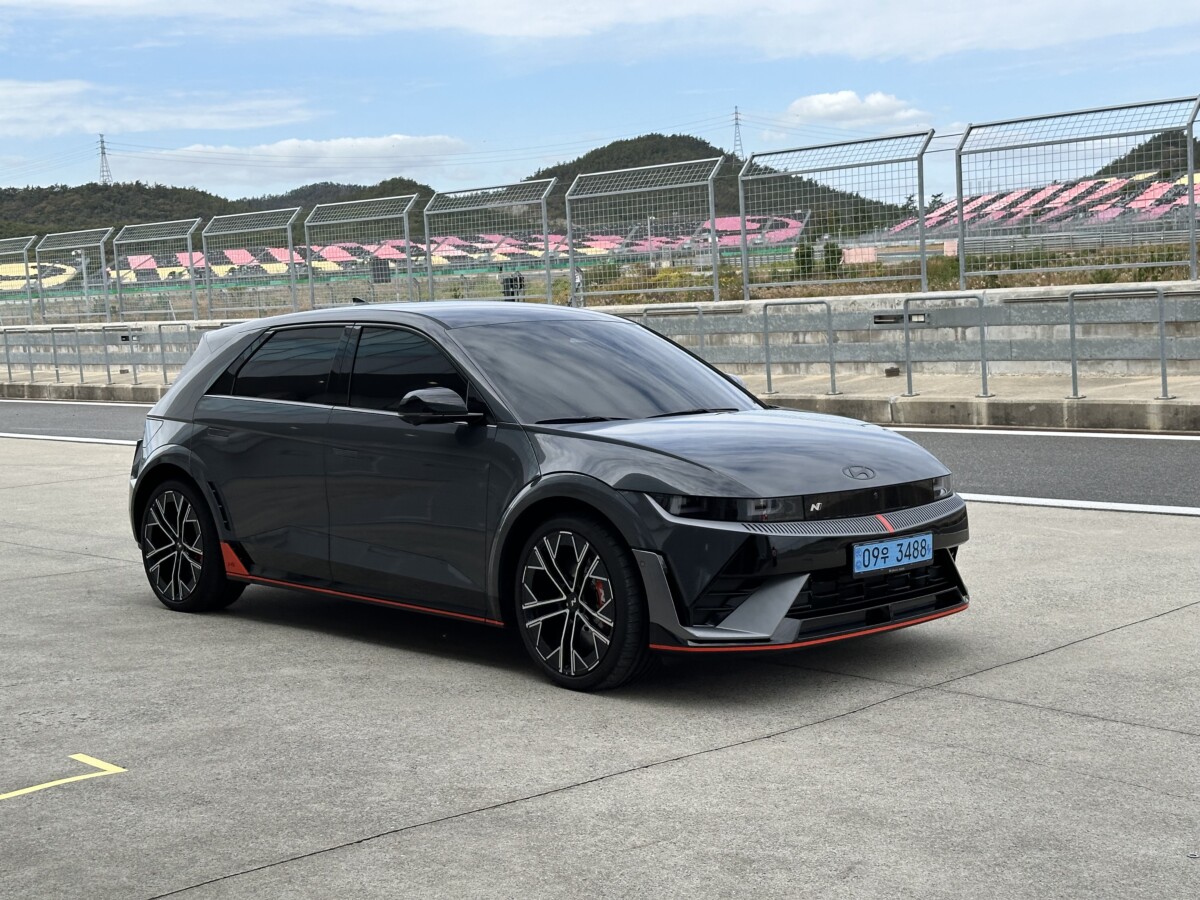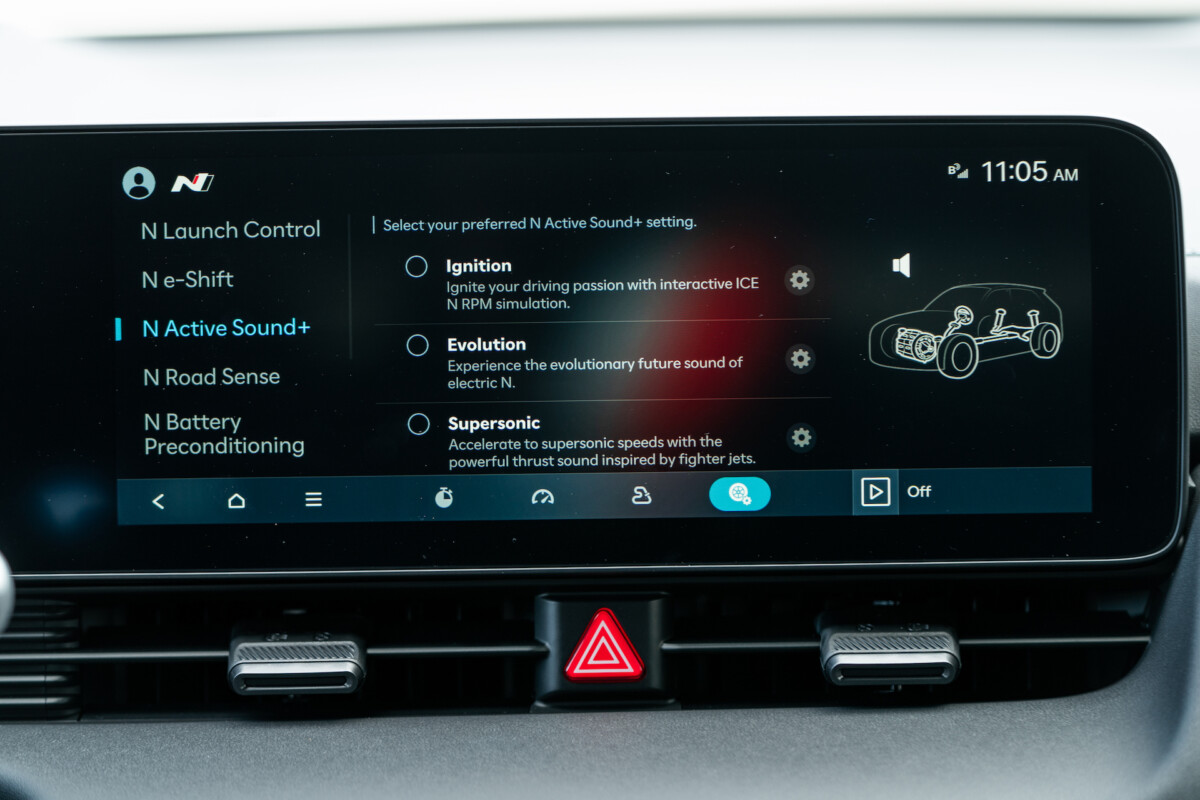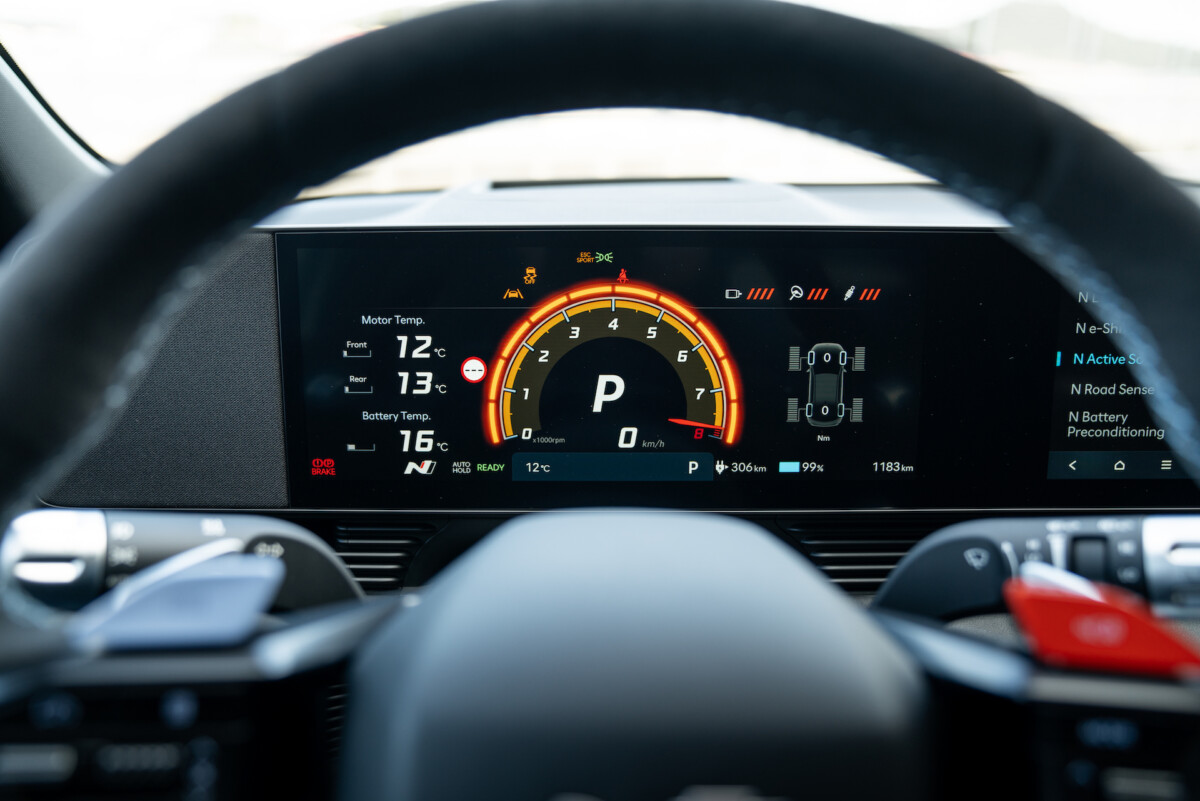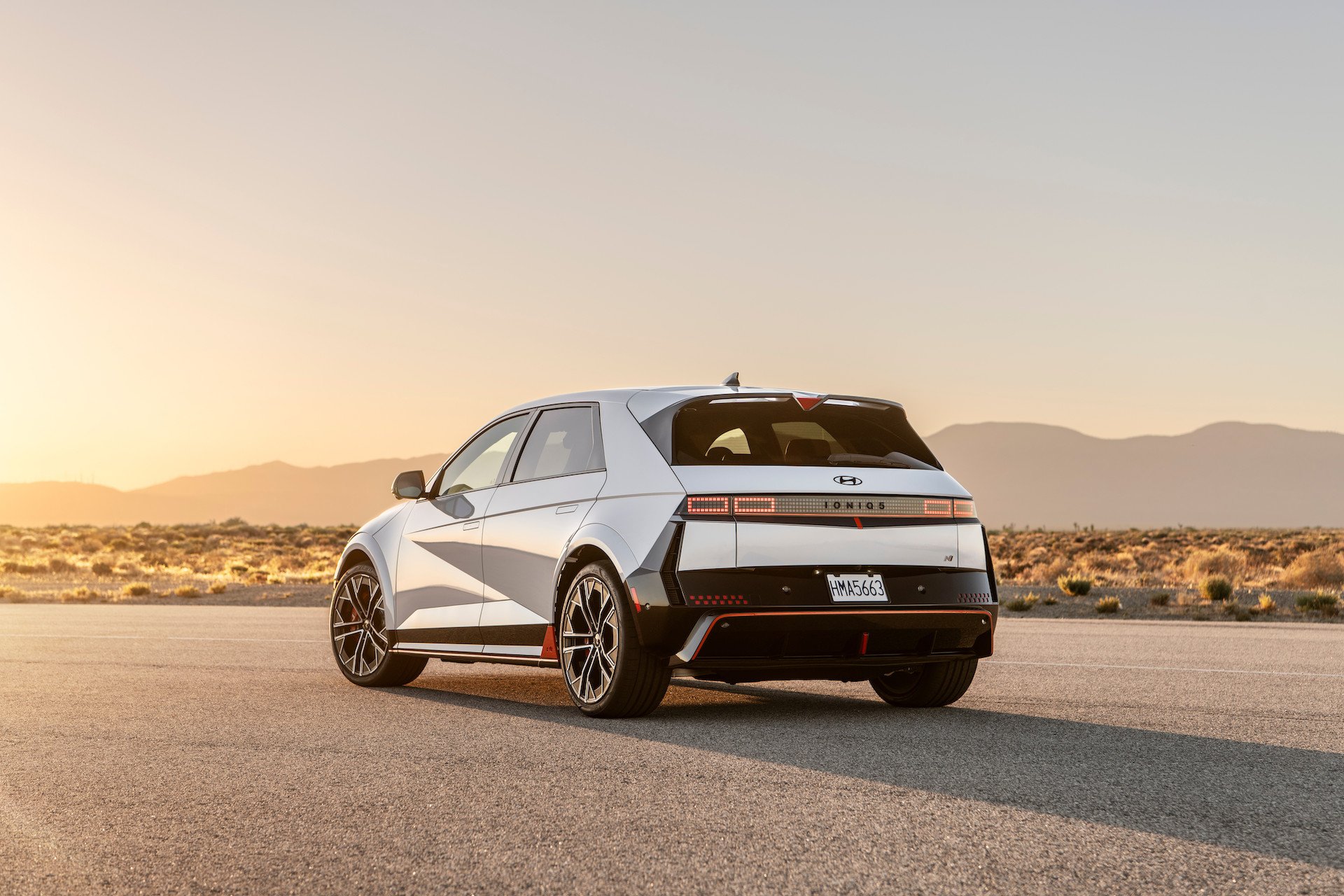The Hyundai Ioniq 5 N is the first sports electric car that pushes the envelope this far to offer sensations close to what we know from thermal sports cars. It simulates the ratios of a sequential gearbox with a noise worthy of the most powerful thermal engines. Useless gadget or perfect illusion? We tested it in real conditions, and here is our impression of this totally astonishing simulated approach.
It’s been a long time since a dose of “fake” entered the soundtrack of both thermal and electric cars. For the first, models with sporting inclinations began, for a time, to implement complementary soundsmore advantageous obviously, by means of internal and/or external speakers, just to flatter the ears of the driver, passengers, or even happy passers-by (or not).
We have even seen diesels wanting to compete with gasoline engines with more or less success (hello Audi…). Rather less actually. And the adoption of very real exhausts on gasoline engines of course, but with valves with variable opening and settings made to favor backfire when lifting the foot (Hallo AMG…) real, but artificial.
As for electric models, since the beginning, synthetic noises have been used on certain models to replace the interstellar auditory void that they leave behind. One of the best known is the Star Wars-style soundtrack of the Renault Zoe (or the crickets of the former Autolib’ for Parisians). We also saw what Abarth was capable of with its 500th or Dodge with its future Charger in a not necessarily subtle sporting register.

In addition, in Europe, since 2021, all electric vehicles must be equipped with an AVAS low-speed warning system for pedestrians, below 20 km/h. And in general, all manufacturers are racking their brains to know how to pleasantly accompany the developments of their electric models, giving them a sound personality which can be modulated to everyone’s taste, over time, according to uses, etc. A bit like lighting ambiances or room fragrances.
This is even more true for sports modelsbetween the compositions of Hans Zimmer (BMW), the sounds drawn from electric motors (Porsche Taycan) or… the embarrassment of choice: Hyundai with its Ioniq 5 N that we have just tested, on the open road and on the circuit.
Magic Palettes
Hyundai engineers decided to do everything they could to make their first electric sports model as exciting to drive as possible. And pure performance was not their obsession, but rather sensations, pure pleasure. And for this, the boss of the N motorsport branch began by exploring the path of regenerative braking of electric motors, appreciating the potential of driving with one pedal on small mountain roads, increasing the pace.
Then, slowly, the idea matured of recreating gearbox ratios similar to what a sequential transmission (automatic gearbox) with steering wheel controls offers. The project was directly entrusted to the engineer in charge of transmissions for the thermal versions. Little by little, the internal reluctance of aficionados is receding in the face of the quality of the services. And even if it’s all just a question of programming, the result is stunning.
Please note that electric cars do not have gearboxes. Except for a few specific models, such as the Porsche Taycan and the MG Marvel R, both equipped with a two-speed automatic gearbox.
With the fake Hyundai gearbox, the brief load cuts between each report are present, as is the engine braking when downshifting and even… a breaker preventing exceeding a predetermined engine speed: 6,700 theoretical rpm, when in reality , the electric motor reaches 21,000 rpm. In short, everything is there! Enough to offer driving ultra-close to what we would have with a thermal powertrain. Toyota is also working on an electric car with a fake gearbox as we saw on a prototype.
But there was still one crucial aspect missing for this feast of the senses: hearing.
The choice of sound
To accompany these services and flatter the ear, Hyundai has integrated a slew of speakers into the car: 8 speakers in the passenger compartment, and 2 external speakers, front and rear. The criteria taken into account: engine speed, action on the accelerator pedal, speed, engine torque. As a result, the generator is capable, in Ignition mode, of aping the noise of a 4-cylinder turbo engine, including vibrations at idle (felt in the door armrests!), rumbles when changing gears, backfires when getting up. of foot or even the howl at the use of the launch control during standing starts.

An impressive result from the inside as well as the outside, ultra-realistic in most cases, with just a few synthetic sounds during acceleration from “neutral” for example. Truly, the skeptical journalists that we are were won over. To the point of continuing to play in this mode both on winding roads and on circuits.

The two other modes available with the N e-Shift simulation are called Evolution (exaggerated electric car sound) and Supersonic (jet plane sound), but their performances do not have the same effect at all. We bet that Hyundai N engineers will have fun finding new versions (a V6?) to download to the car via Wi-Fi or purchase remotely in the future. Enough to vary the pleasures of this extraordinary car.
